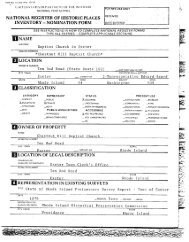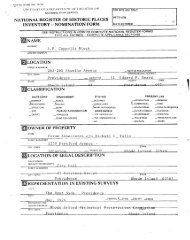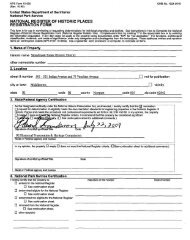1 Dr. Jonathan Prude, Emory University “The Great Transformation ...
1 Dr. Jonathan Prude, Emory University “The Great Transformation ...
1 Dr. Jonathan Prude, Emory University “The Great Transformation ...
You also want an ePaper? Increase the reach of your titles
YUMPU automatically turns print PDFs into web optimized ePapers that Google loves.
14Mill proprietors and managers believed their success depended on exercising firm controlover their employees. This was why many Rhode Island-style factories ultimately broughtoutworkers into their mill villages and part of why they took the further step of replacinghandloom weavers with powerloom operatives (mostly female) toiling inside mill buildings. Itwas also why the mills promulgated intricate “rules and regulations.” And it was why laborinside manufactories was overseen by room “overlookers.” But while such fine-grainedsupervision made managerial sense, it had few precedents in rural or even handicraft labor.Indeed, the kind of overlooking implemented in mills was most closely associated with slaves,which may explain why there are few images of the supervised interiors of American mills inthis period--and why images of factory interiors that do show up in American publications wereoftenlifted from abroad (Figure #6).Once again there were countervailing factors and arguments. Workers got used to thenoise. And, significantly, family-style mills sought to blunt irritations sparked by their oversightby anticipating the Waltham-modeled factories in asserting that their supervision signalled a“paternalistic” interest in their operatives. If the Waltham mills became famous for their matronsupervisedboardinghouses, Rhode Island-style factories boasted of providing employees accessto churches and schools and, more broadly, by insisting that their worktime regimens wouldinstill the punctuality, temperance, and overall self-discipline requisite for moral behavior.But millwork could still seem burdensome. In practice the relatively attractive pay levelscited earlier were eroded by costs of food and boarding, by stoppages caused by weather ormissing raw materials, or by wage cuts driven by rising competition and consequent pressure tocut costs. So too, paternalist gestures were always constrained by management’s need for profitsand, indeed, by growing tendencies to meet heightened competition by stressing the productivityover the moral lessons expected from stiff worktime discipline.How then did operatives respond to the mixed bag of millwork? Some simply left,returning to whatever situation they had known before entering factory life. Some softened the















